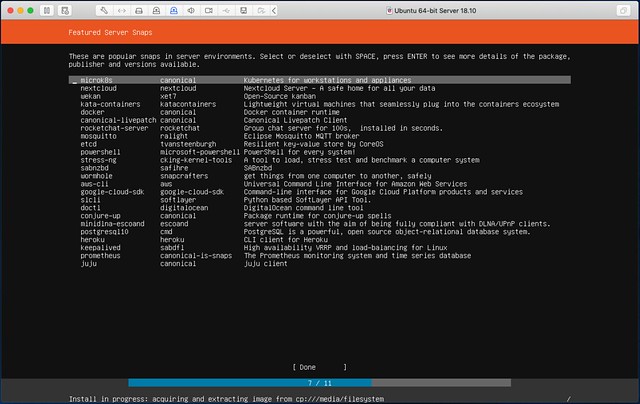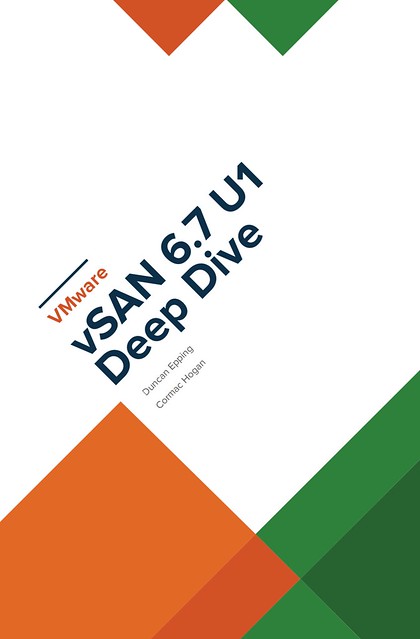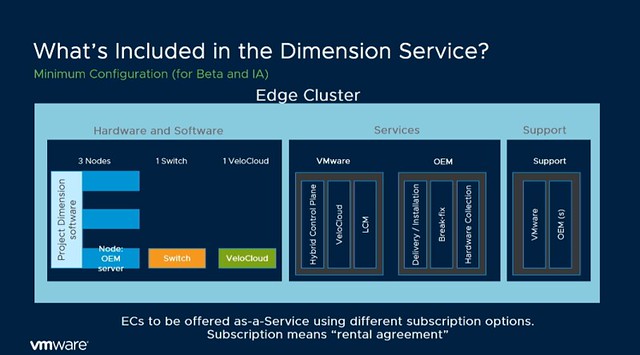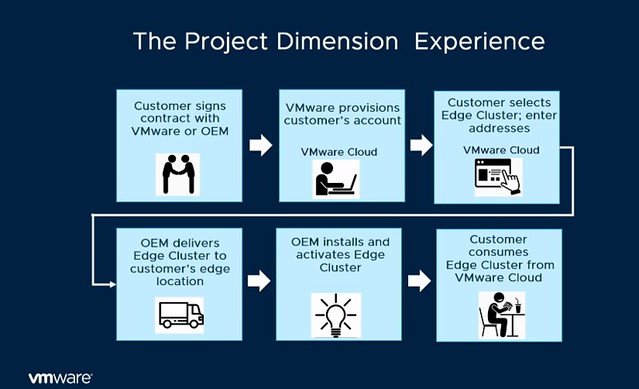On Reddit, someone asked what DRS advanced setting IsClusterManaged does and if it is even legit. I can confirm it is legit, it is a setting which was introduced to prevent customers from disabling DRS while the cluster is managed by vCloud Director for instance. As disabling DRS would lead to deleting resource pools, which would be a very bad situation to find yourself in when you run vCloud Director as it leans on DRS Resource Pools heavily. So if you see the advanced setting IsClusterManaged in your environment for DRS, just leave it alone, it is there for a reason. (Most likely because you are using something like vCloud Director…)
cloud
Want to play around with Kubernetes? Try MicroK8s!
Two weeks ago I wanted to play around with Kubernetes for a day or two. I found this training course internally at VMware that allowed me to go through some labs. I asked around if anyone had some tips on getting Kubernetes up and running fast. I couldn’t be bothered with creating a multi node kubernetes cluster. I wanted to play around with some of the commands and YAML files. I tried Atomic as suggested by the lab manual, but there were way too many steps involved to install/configure Kubernetes if you ask me. Next option would be some version hosted in a cloud of choice, but I didn’t want to incur the cost. After digging around I stumbled on MicroK8s. It sounded easy, so I figured I would give it a try. When it comes to Linux my preference is Ubuntu/Debian, it is just what I am most familiar with, and as MicroK8s comes from Canonical I figured I would give it a try. As Kelsey Hightower suggested on twitter yesterday (which triggered this article), it is just one command away:
I think @Canonical might have assembled the easiest way to provision a single node Kubernetes cluster:
$ snap install microk8s –classichttps://t.co/Px9UZVrv01
— Kelsey Hightower (@kelseyhightower) April 23, 2019
I downloaded the latest Ubuntu Server ISO and I created a VMware Fusion VM. I stepped through the installation wizard of Ubuntu Server and then noticed it already provided the option even to install “microk8s”, I selected the package, and some additional packages I figured I would need, and clicked done. Literally within minutes, I had a fresh single node Kubernetes configuration, which for me worked straight out of the box!

After it is done configuring, click reboot and login. I created an alias for kubectl, as I didn’t want to type “microk8s.kubectl” every time or install a different version:
sudo snap alias microk8s.kubectl kubectl
I also enabled the Kubernetes dashboard from the get-go, which can be done by running the command “microk8s.enable dashboard“. There are a whole bunch of articles out there that can take you through the steps of deploying your first container, making it highly available by specifying the number of instances so I am not going to do that. I don’t want to pretend to be an expert, as I am far from that. Also, check the MicroK8s documentation, it is pretty decent. My colleague Myles Gray has a very good tutorial on why containers, very good read which I also recommend for people who just want to know a bit more about it like myself.
Top 10 VMware tools podcast and RVTools 3.11.6
Right after we finished recording the Virtually Speaking Podcast on the topic of VMware Tools (Listen to it, great episode featuring Pete, John, William Lam and myself) yesterday I received an email from Rob. Rob mentioned an update to RVTools, bringing it now to version 3.11.6. As I mentioned on the podcast, RVTools has been around for 10 years now, what an achievement! Insane number of downloads, but understandable as it is very useful for anyone and everyone running a VMware environment. If you never looked at it, download it today, I am sure you will find various inconsistencies or issues, we all have! So, what changed in 3.11.6?
Version 3.11.6 (March, 2019)
- Upgraded RVTools solution to use VMware vSphere Management SDK 6.7U1
- Windows Authentication Framework (Waffle) is no longer used by RVTools
- NPOI .NET library for creating excel export files is no longer used by RVTools
- RVTools now uses OpenXML and ClosedXML for creating the excel export files
- Performance improvements for export to excel
- added -ExcludeCustomAnnotations switch to RVTools command line interface
- added –DBColumnNames switch to RVTools command line interface
- vInfo tab page new column: Creation date virtual machine
- vInfo tab page new columns: Primary IP Address and vmx Config Checksum
- vInfo tab page new columns: log directory, snapshot directory and suspend directory
- dvSwitch tab page new columns: LACP name, LACP mode and LACP loadbalance Algorithm
- vNIC tab page new column: Name of uplink port
- vNetwork tab page new column: Network Adapter DirectPath I/O Parameter
- vHost tab page new columns: Serial number and BIOS vendor
- Header row and first column in export Excel file are now locked.
- First “Select” column is removed from excel worksheet vFloppy, vCD and vTools.
- added a new executable to merge your vCenter xlsx files super-fast to one xlsx file.
RVToolsMergeExcelFiles.exe -input c:\temp\AA.xlsx;c:\temp\BB.xlsx -output c:\temp\AABB.xlsx -template c:\temp\mytemplate.xlsx -verbose –overwrite - Example script RVToolsBatchMultipleVCs.ps1 is changed. It will now uses RVToolsMergeExcelFiles to merge the xlsx files.
- Bug Fix: a Single Sign On problem solved
- Bug Fix: ExportvSC+VMK2csv command was not working
- Bug Fix: ExportdvPort2csv command was not working
- Bug Fix: On vNIC tabpage not all Switch/dvSwitch information was displayed
- Bug Fix: Export now reflect value of “Latency Sensitivity” enumeration
- Bug Fix: After changing the preference settings the data is not always refreshed as needed
- Bug fix: Content Libraries vmdk files are no longer reported as possible zombie files
New book: VMware vSAN 6.7 U1 Deep Dive
Cormac Hogan and I have been working late nights and weekends over the past months to update our vSAN book material. Thanks Cormac, it was once again a pleasure working with you on this project! As you may know, we released two versions of a vSAN based book through VMware Press. The book was titled vSAN Essentials. As mentioned before, after restructuring and rewriting a lot of the content we felt that the title of the book didn’t match the content, so we decided to rebrand it to vSAN 6.7 U1 Deep Dive. After receiving very thorough reviews by Frank Denneman and Pete Koehler (Thanks guys!) we managed to complete it this week after we added a great foreword by our business unit’s SVP and General Manager, Yanbing Li.
Cormac and I decided to take the self-publishing route for this book, which allows us to set a great price for the ebook and enable the Amazon matchbook option, giving everyone who buys the paper version through Amazon the option to buy the e-book with a nice discount! As prices will vary based on location I am only going to list the USD prices. Please check your local Amazon website for localized prices. Oh, and before I forget, I would like to recommend buying the ebook flavor! Why? Well:
“On average, each printed book releases 8.85 pounds of carbon dioxide into the environment. Together, the newspaper and book-printing industries cut down 125 million trees per year and emit 44 million tons of CO2.”
We appreciate all support, but we prefer the cleanest option from an environmental stance, this is also the reason we priced the ebook a lot cheaper than the paper version. Anyway, here are the links to the US store, we hope you enjoy the content, and of course as always an Amazon review would be appreciated! Interestingly, it seems we already reached number 1 in the category Virtualization and the category Storage before this announcement, thanks everyone, we really appreciate it! (Please note, as an Amazon Associate I earn from below qualifying purchases.)
- Paper version – 39.95 USD
- Ebook version – 9.99 USD
- Match book price – 2.99 USD for the ebook!
(you need to buy the paper edition first before you see this discount, and this may not be available in all regions, unfortunately.)

UPDATE:
It appears that some Amazon stores take a bit longer to index the content, so listing all the different versions below for the different stores that sell it:
Project Dimension – VMware’s Edge Computing effort
Internally some of my focus has been shifting, going forward I will spend more time on edge computing besides vSAN. Edge (and IoT for that matter) has had my interest for a while, and when VMware announced an edge project I was intrigued and interested instantly. At VMworld US the edge computing efforts were announced. The name for the effort is Project Dimension. There were several sessions at VMworld, and I would recommend watching those if you are looking for more info then provided below. The session out of which I took most of the below info was IOT2539BE, titled “Project Dimension: the easy button for edge computing” by Esteban Torres and Guru Shashikumar. Expect more content on Project Dimension in the future as I start getting involved more.
What is Project Dimension? What discussed at VMworld was the following:
- A new VMware Cloud service; starting at edge locations
- Enable enterprises to consume compute, storage, and networking at the edge like they consume public cloud
- VMware will work with OEM partners to deliver and manage hyperconverged appliances in edge locations
- All appliances will be managed by VMware via VMware Cloud
So what does it include? Well as mentioned it includes hardware, the type etc hasn’t been mentioned, but it was said that Dell and Lenovo are the first two OEMs to support Project Dimension. This hyperconverged solution will include:
- vSphere
- vSAN
- Velocloud
This solution will be managed by a “hybrid cloud control plane” as it is referred to, all by VMware. Architecturally this is what the service will look like:

Now what I found very interesting is that during the session someone asked about the potential for Dimension in on-prem datacenters, and the answer was: “Edge is where we are beginning, but the long-term plan is to offer the same model for data centers as well”. Some may notice that in the above list and diagram NSX is missing, as mentioned during the session, this is being planned for, but preferably will be a “lighter” flavor. What also stands out is that the HCI solution includes not only compute but also networking (switches and SD-WAN appliance).
Now, what is most interesting is the management aspect, VMware and the OEM partner will do the full maintenance/lifecycle management for you. This means that if something breaks the OEM will fix it, you as a customer however always contact VMware, single point of contact for everything. If there’s an upgrade then VMware will go through that motion for you. Every edge cluster for instance also has a vCenter Server instance, but you as an administrator/service owner will not be managing that vCenter Server instance, you will be managing the workloads that run in that environment. This to me makes sense, as when you scale out and potentially have hundreds or thousands of locations you don’t want to spend most of your time managing the infra for that, you want to focus on where the company’s revenue is.
Now getting back to the maintenance/upgrades. How does this work, how do you know you have sufficient capacity to allow for an upgrade to happen? VMware will also ensure this is possible by doing some form of admission control, which prevents you to claim 100% of the physical resources. Another interesting thing mentioned is that Dimension will allow you to chose when the upgrade or patches will be applied. In most environments maintenance will have an impact on workloads in some shape or form, so by providing blackout dates a peak season/time can be avoided.
From a hardware point of view and procurement perspective, this service is also different then you are used to. The services will be on a subscription basis. 1 year or 3-year reserved edge clusters, or more of course. And from a hardware perspective, it kind of aligns with what you typically see in the cloud: Small, Medium or Large instance. Which then refers to the number of resources you get per node. Starting with 3 nodes, of course, have the ability to scale up and potentially start smaller than 3 nodes in the future. The process in terms of sign up / procurement is displayed in the diagram below, delivery would be within 1-2 weeks, which seems extremely fast to me.

What I also found interesting was the mention of a “try and buy” option, you pay for 3 months and if you like it you keep it, and your 3 months contract will go to 1 year (or so) automatically.
At this point you may be asking: why is VMware doing this? Well, it is pretty simple: demand and industry changes. We are starting to see a clear trend, more and more workloads are shifting closer to the consumer. This allows our customers to process data faster and more importantly respond faster to the outcome, and of course, take action through machine learning. But the biggest challenge customers have is consistently managing these locations at a global scale, and this is what Project Dimension should solve. This is not just a challenge at the edge, but across edge, on-prem and public cloud if you ask me. There are so many moving parts, various different tools, and interfaces, which just makes things overly complex.

So what is VMware planning on delivering with Project Dimension? Consistently, reliable and secure hyperconverged infrastructure which is managed through a Cloud Control Plane (single pane of glass management for edge environments) and edge-to-cloud connectivity through Velocloud SD-WAN. (Management traffic for now, but “edge to edge” and “edge to on-prem” soon!) There’s a lot of innovation happening at the back-end when it comes to managing and maintaining 1000s of edge locations, but you as a customer are buying simplicity, reliability, and consistency.
Please note, Project Dimension is in beta, and the team is still looking for beta customers. You need to have a valid use case, as I can see some of you thinking “nice for a home lab for a couple of weeks”, but that, of course, is not what the team is looking for. For those who have a good use case, please go to the product page and leave your details behind: http://vmwa.re/dimension